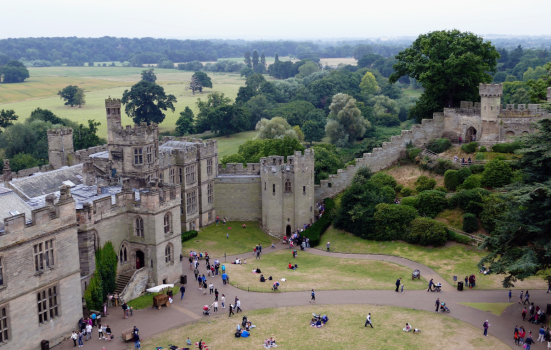The 10-year strategy will see the continuation of open funding programmes alongside new ‘strategic funding streams’ including place-based investments.

PxHere
The National Lottery Heritage Fund (NLHF) has shared the details of its new 10-year strategy, Heritage 2033.
Over the next decade, the UK’s largest funder for heritage expects to invest a total of £3.6bn in good causes through funding generated from National Lottery players.
The strategy outlines an intention to introduce new strategic funding streams, including at least £200m over the life of the strategy towards place-based investment, which was first proposed during a consultation period last year.
READ MORE:
Place-based investment will “boost the capacity of local places and communities to develop partnerships and seek out areas that have the potential to draw in and benefit from wider investment,” guidance on NLHF’s website states.
Other new strategic initiatives developed through the early stages of the strategy will include support for large-scale projects that revive landscapes and support nature recovery, targeted support for conservation and heritage at risk projects, and responding to heritage acquisitions, opportunities and emergencies.
Feedback from the consultation period found “people want us to do even more to address the challenges heritage faces and to increase the positive contribution it makes to life in the UK,” a statement from the NLHF Board of Trustees says.
“Over the next decade we will take a longer-term view, investing in heritage for the future as well as for the present. We will invest in places, not just individual projects, to bring about benefits for people, places and our natural environment.”
Alongside new target areas, NLHF plans to retain its current approach of offering open funding programmes, ranging from small grants up to multi-million-pound projects.
It says most funding decisions will continue to be made locally, “by people who live and work in your communities”.
When the strategy comes into force, the higher investment threshold will be raised for the first time in more than 20 years, from £5m to £10m.
The funder says it will also consider investing in projects above this threshold to "support truly exceptional heritage projects across the UK”.
“We will adapt our investment thresholds and approach through the 10-year strategy to respond to the needs and requirements of heritage,” NLHF said.
Four investment principles
NLHF has announced four investment principles it says will underpin its decision making, from open programme funding to strategic investments and when entering new collaborations and partnerships.
Guidance on the funder’s website embeds a set of targets within each investment principle for the 10-year period. The first investment principle, saving heritage, includes a commitment to reducing the amount of heritage identified as 'at risk’ over the decade, as well as developing digital heritage resources.
The second, protecting the environment, includes an intention to reduce the negative environmental impact and carbon footprint of the NLHF’s funding portfolio.
An investment principle focused on inclusion, access and participation will ensure increased diversity of heritage workforces, leadership and audiences, while the final investment principle - organisational sustainability - intends to support organisations to increase their financial and organisational sustainability and commits to using a flexible funding model to embed resilience into funded projects.
All four investment principles are largely based on areas identified as priorities for the heritage sector by members of the public during a research project commissioned by NLHF last year.
NLHF Chair Simon Thurley and Chief Executive Eilish McGuiness said the four principles will “create a more flexible framework to guide our funding”.
The pair added that further details on how the funder will deliver the strategy will be published through a series of three-year delivery plans, the first of which is expected this summer.
Until then, NLHF says those applying for funding through current programmes should continue to consider its active guidance and outcomes.




